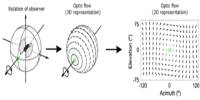A thermoelectric generator (TEG), also known as a Seebeck generator, is a solid-state device that directly converts heat flux (temperature differences) into electrical energy via the Seebeck effect (a type of thermoelectric effect). Thermoelectric generators work similarly to heat engines, but are smaller and have no moving parts. TEGs, on the other hand, are typically more expensive and inefficient.
TEG is a device that uses the Seebeck effect to convert heat energy into electrical energy. When a temperature gradient is applied across a material with dissimilar electrical conductivities, a potential difference is created, which generates an electric current. TEGs have many applications, including remote power generation, waste heat recovery, and thermoelectric cooling. They are also used in spacecraft to provide electrical power without the use of moving parts, which reduces the risk of mechanical failure.
Thermoelectric generators could be used in power plants to convert waste heat into additional electrical power, and they could also be used in automobiles as automotive thermoelectric generators (ATGs) to improve fuel efficiency. Radioisotope thermoelectric generators generate the required temperature difference to power space probes by using radioisotopes.
The efficiency of a TEG is determined by the thermoelectric properties of the materials used to construct it, as well as the temperature difference across the device. In general, TEGs are most efficient at high temperatures, typically above 500°C, and are less efficient at lower temperatures. Research in the field of thermoelectric materials is ongoing, with the goal of developing materials with higher conversion efficiency, lower cost, and improved durability.
Advantages
TEGs have several advantages over other types of power generators, including ease of use, dependability, and the absence of moving parts. They can operate in a wide temperature range and are especially useful in remote or inaccessible areas where other power sources are unavailable. TEGs are also eco-friendly because they generate electricity without emitting pollutants or greenhouse gases.
Limitations
TEGs, on the other hand, have some limitations, including a low efficiency when compared to other power generation methods. They are also typically more expensive than traditional power sources and may be incapable of producing sufficient power for high-demand applications. Despite these limitations, TEGs are gaining popularity in various fields, such as in space probes, vehicles, and remote sensors, where they provide a reliable source of power without the need for fuel or maintenance.
















